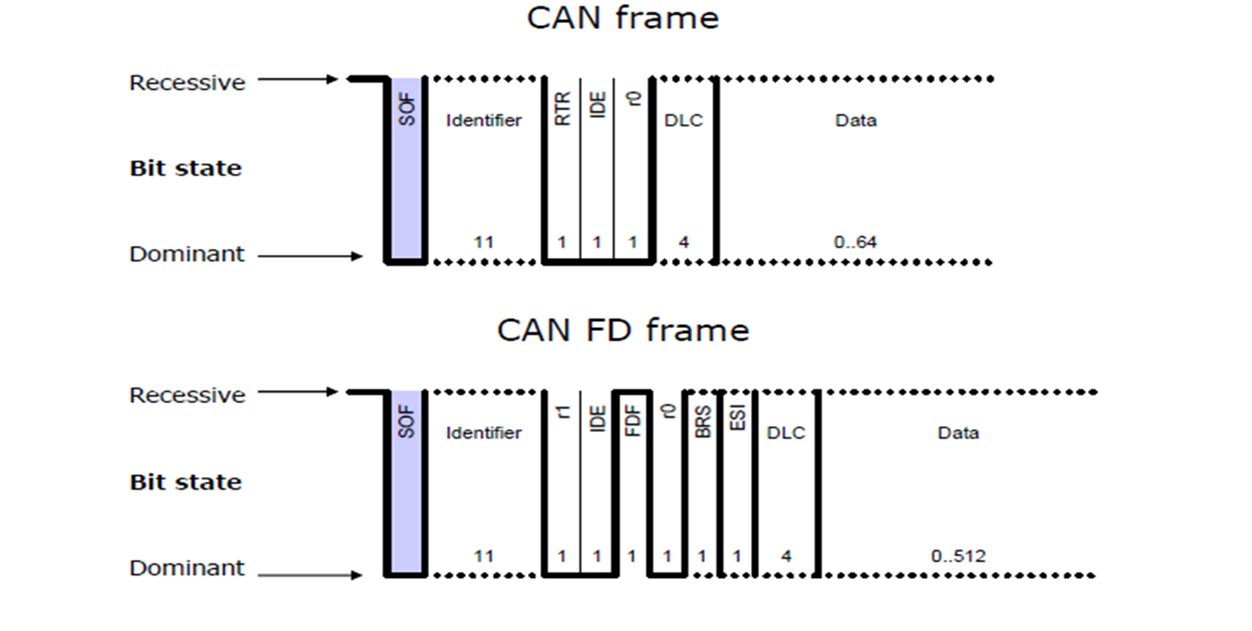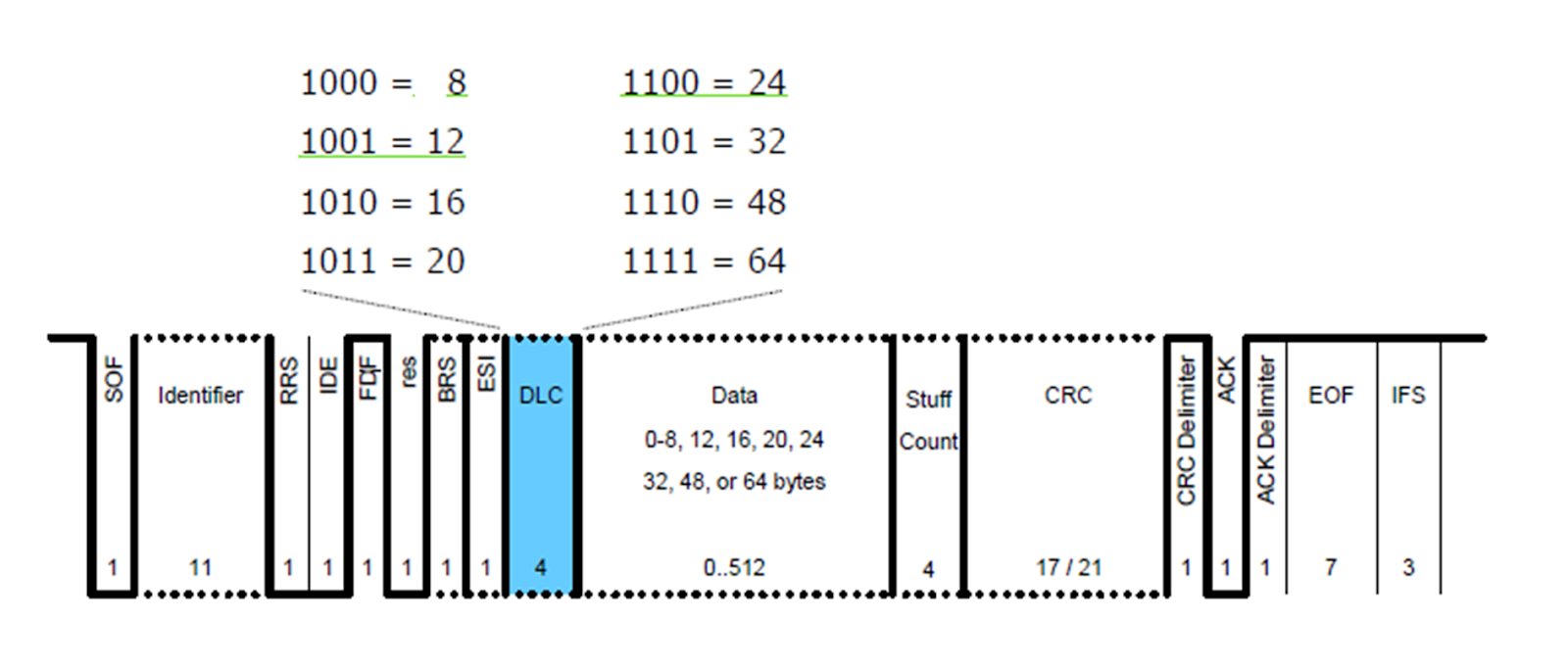CAN -FD
What is CAN -FD
- CAN-FD is a communication protocol based on CAN>
- CAN-FD is an improvement over CAN.
- Modern CAN controllers support both CAN and CAN-FD frames
Note: CAN-FD is not a substitute for CAN protocol. A Single automotive network can have both CAN frames and CAN-FD frames.
so CAN-FD protocol must be compatible with CAN protocol.
Advantages of CAN-FD over CAN
- Data: CAN -FD frame can carry up to 64 bytes of data whereas CAN carries 8 Bytes
- Speed: CAN-FD frame maximum speed up to 5Mbps whereas CAN frame up to 1Mbps.
Note: CAN-FD has dual speed (bit rate ). Data and CRC fields can be transmitted at a higher speed. The remaining fields of the frame will be transmitted with a lower speed, the same as the CAN speed.
The orange colour field will transmit at a lower speed. and the Blue colour field will transmitted at a higher speed.
CAN and CAN FD use the same SOF –a single “dominant” bit
- Little difference between CAN and CAN FD arbitration fields
- Both share the same addressing for Standard and Extended formats
- CAN FD removes the RTR bit and maintains an always dominant RRS bit
- CAN and CAN FD share the following bits:
- - IDE , res and DLC bits
- CAN FD adds the following bits to the control field:
- - FDF (FD Frame)
- - BRS (Bit rate switch)
- - ESI (Error state indicate)
FDF (FD Frame) :
- Determines CAN FD (recessive)
- in classical CAN this bit is not present
BRS (Bit rate switch) :
- Clock rate switches when BRS is recessive
ESI –Error State Indicator (error active/pasive)
Control Field: DLC
- 4 bits are used for both formats (CAN and CAN-FD)
- For DLC ≥ 8, CAN FD uses the follow
Data Field :
- 0-8 bytes in CAN
- 0-8, 12, 16, 20, 24, 32, 48, or
CRC Field: Stuff Count
- How many Stuff bits are there in the bit stream are provided in the Frame after Data field.
CRC Field: CRC Sequence
- The size of CRC differs based on CAN/CAN FD and the length of DLC
- 15 bits for CAN
- 17 bits for CAN FD where DLC ≤ 16 bytes
- 21 bits for CAN FD where DLC > 16 bytes











Comments
Post a Comment